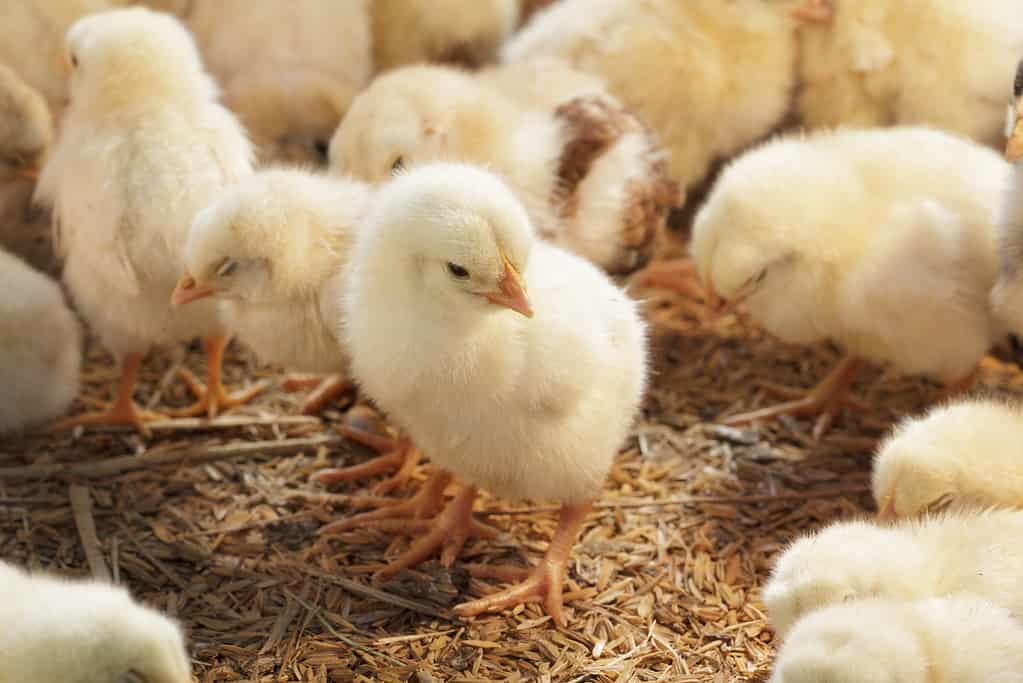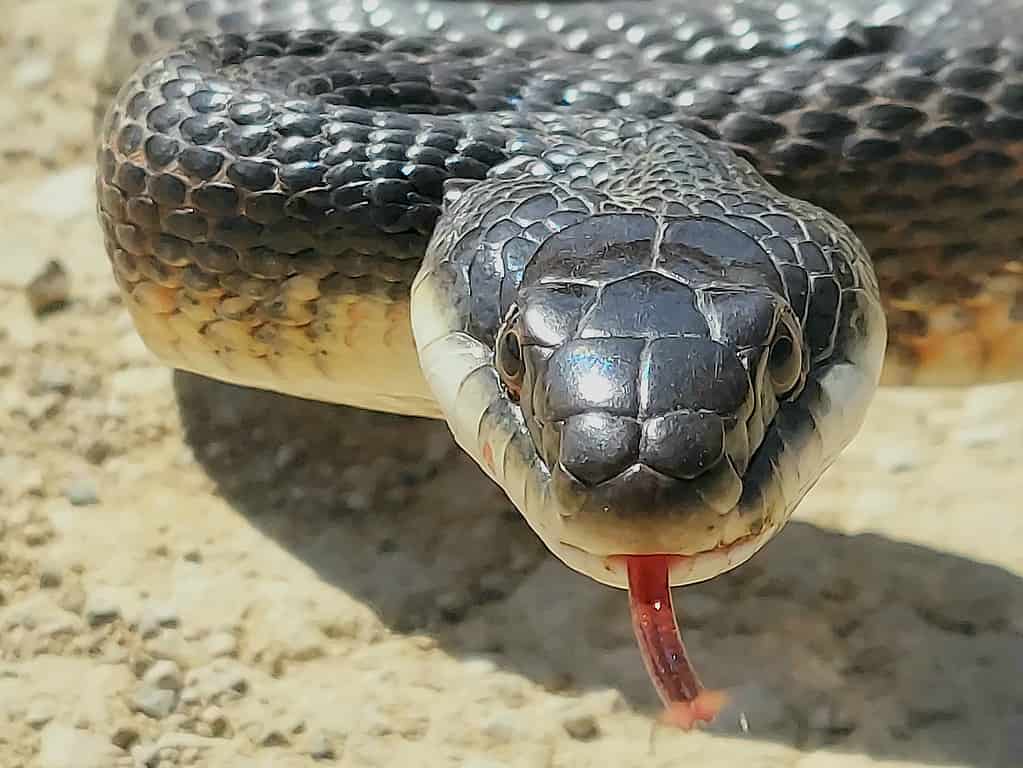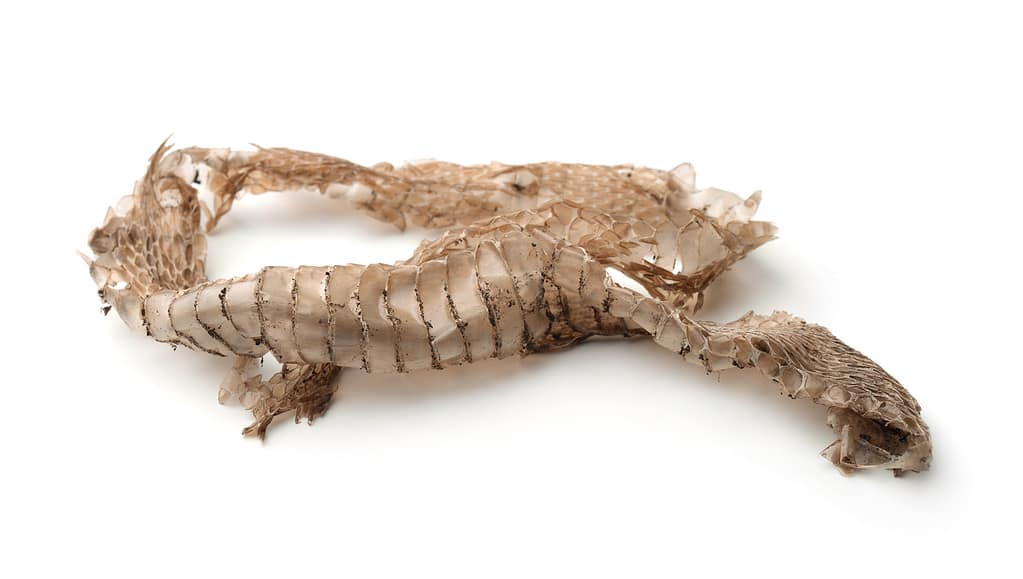The 10 Most Effective Ways to Keep Snakes Out of the Chicken Coop
Snakes are inclined to be attracted to chicken coops as they offer these slithering serpents shelter and a nutritious snack to eat. Unfortunately, snakes pose a threat to chickens because not only are chickens a great source of food, but they also disrupt the coop’s surroundings. Furthermore, the presence of snakes may cause chickens to feel stressed and scared. Therefore, this results in non-productive and anxious-stricken chickens. Sounds like absolute chaos…but don’t fret, dear farmers, as A-Z animals will keep your headaches at bay and provide you with the most effective ways to keep snakes out of your chicken coop.
Why Are Snakes Attracted to Chicken Coops
- Shelter and warmth
- Chicken and egg food source
- Egg-laying sites
Shelter and warmth

©iStock.com/nedjelly
Chicken coops offer a cozy and protected space that snakes find appealing, especially when the weather is unfavorable. Because snakes are cold-blooded creatures, they depend on external heat sources to control their body temperature. Therefore, Chicken coops make the perfect refuge for snakes, as it protects them from scorching summer days and freezing winter nights.
Chicken and egg food source

©Toa55/iStock via Getty Images
Snakes are often attracted to chicken coops because they find an easily accessible source of food there. Snakes find eggs, chicks, and even adult chickens, alluring targets for their meals.
Egg-laying sites
Certain types of snakes, like rat snakes, tend to lay their eggs in hidden spots, which may even include the snug corners of chicken coops. This comfortable environment and perceived safety make chicken coops quite attractive for snakes to choose as ideal spots for laying their own eggs. As a result, these reptiles might explore chicken coops in search of suitable locations to deposit their offspring.
Hunting ground for insects and small prey

©Chorch/Shutterstock.com
Chicken coops also draw in insects and small animals seeking shelter and sustenance. Therefore, apart from serving as a haven for chickens, the coop also becomes a habitat for creatures such as mice, rats, grasshoppers, and crickets. Consequently, the presence of a coop provides snakes with variety food sources, which will naturally draw their interest within that specific vicinity.
How do Snakes get inside chicken coops
Snakes have a knack for finding their way into chicken coops using different methods. Initially, snakes are incredibly flexible and can very easily slip through exposed entry points of coops
- Walls
- Windows
- Roofs
- Open vents
Sometimes, they are even able to sneak in underneath raised coops or nesting boxes that have not been closed properly. Therefore, it’s important to regularly inspect the coop for any gaps and promptly seal them up to prevent any unwanted snake visitors.
Common snake species found in chicken coops
Rat snake

©John Callahan/iStock via Getty Images
One well-known snake that is sure to pop round the chicken coop is the non-venomous rat snake. These snakes are found throughout the United States, reaching lengths around 5 feet long. You may come across them in shades ranging from black to yellow with stripes. While others may even display a grey color with brown patterns.
Garter snake

©iStock.com/SolomonCrowe
These little snakes have slim bodies and grow approximately 2 -3 feet long. Garter snakes hold different skin markings that include stripes and vibrant colors. Because these snakes are not venomous, they pose no threat to chickens. In fact, your chicken is inclined to eat them since they are high in protein and full of nutrition.
Corn snake

©bugphai/iStock via Getty Images
Corn snakes are located amongst rural parts of Florida, Louisiana, and Kentucky. They usually feed on small prey, but once fully grown, they are able to feast on chicken eggs. These snakes exhibit a bright orange body followed by reddish-orange squares on its back.
Copperheads

©Joe McDonald/Shutterstock.com
The copperhead snake may be easily spotted by its copper colored head and hourglass-shaped markings on their backs. As they reach maturity copperheads can reach lengths of up to 3 feet long. One unique feature about these snakes is their heat-sensing pit that’s located between their eye and nostrils. In addition, this heat sensory organ is used to locate prey, followed by a seamless strike.
Signs that you may have a snake lurking inside the chicken coop

©Coprid/iStock via Getty Images
Shedding of snake skin: Discovering discarded snake skin in or around the chicken coop is a sign that a snake is present. Snakes naturally shed their skin as they mature, leaving behind a soft, scaley skin covering that still bears the distinct shape of the snake.

©iStock.com/happydancing
Missing eggs and chickens: If you happen to observe a decline in egg count or are missing baby chicks, there is a great chance that snakes are preying on them.

©KSullivan/Shutterstock.com
Snake tracks: Check the ground near the chicken coop for any signs of snake activity. Look for tracks that resemble a series of S-shaped patterns, as they might guide you to where the snake’s hiding.
Snake droppings: If a snake has visited the vicinity, you might find snake droppings both inside and outside the coop. These droppings typically take on a tubular form with a tip that is either white or off white.
How to keep snakes out of the chicken coop
1. Shield coop openings
Make sure to cover all openings in the chicken coop, including doors, windows, and vents, by adding tightly fitting hardware cloth. This will help keep snakes from getting through any gaps.
2. Seal up gaps and cracks
Inspect the chicken coop for visible cracks and gaps where snakes might be able to slip through. In addition, make use of materials like caulk, foam, and wire mesh to seal up these openings.
3. Purchase a snake fence
To protect the coop from snakes, it’s highly recommended to construct a fence that is resistant to snake intrusion. Therefore, the fence requires well-grounded materials that extend a few feet into the ground where the angled section of the fence is placed outward to discourage climbing attempts by snakes.
4. Clean coop regularly
Make sure to maintain cleanliness in the coop area by keeping it free from any food scraps, eggs, or rodents that might attract snakes.
5. Rodent control
To effectively control snakes, it is important to implement measures that target their attraction to rodents. Consider using trap bait stations to address the issue if needed.
6. Natural deterrents
Try using a natural snake deterrent like cinnamon, clove, or eucalyptus oil. These ingredients give off strong aromas that will irritate the snake’s senses, resulting in scaring them away from the coop.
7. Install motion cameras and bright lights
Installing bright lights in your coop area is a non-harmful way to frighten snakes away. Furthermore, motion cameras will also allow you to keep a close eye out for any unwelcome guests.
8. Set up an electric fence
Select a fence that is specifically designed to discourage snakes. Electric fences designed to repel snakes usually emit low-voltage pulses that deliver a shock, deterring the snakes without causing any harm.
9. Non-harmful predators
Welcome hawks and owls to your property! Creating an environment for these majestic creatures can play a vital role in controlling the snake population.
10. Call for back-up
If you’re dealing with snakes that refuse to leave and you have tried every effective way listed above. That means it’s time to contact a professional that deals with reptiles. Not only will they provide you with knowledgeable advice, but also assist you with solutions to address the problem.
Conclusion
While some state that snakes are frightening creatures but, in reality, they serve an important purpose in our ecosystem by controlling certain populations. However, when it comes to our chicken coops, it’s wise to maintain a safe distance from the delicate balance of nature. By taking precautions, we can ensure that our feathered companions can peacefully reside in their coop without any unwelcome snake encounters.








